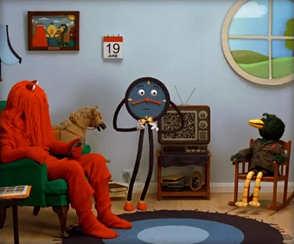Phantom Time Hypothesis
By Clive Python | 14jammar
Time, he flexes like a whore
Falls wanking to the floor
His trick is you and me, boy
Time, in quaaludes and red wine
Demanding Billy Dolls
And other friends of mine
Take your time
What they teach you in school IS A LIE!
The Phantom Time Hypothesis was first made by Heribert Illig in 1991,
the idea is that 614 AD - 911 AD in Europe were forged by the Roman
Catholic Church.
The idea comes from the Gregorian calendar that was first introduced
in 1582, the difference between it and the old Julian calendar should
have been 13 days, but the calendar was only "rewound" 10 days forward.
These three days would add up to 300 years, which are "missing".
This was later countered with the argumentation that the Gregorian calendar was
synchronised not with 1 AD but with 325 AD, when the First Council of Nicaea
took place, thus accounting for the "missing" three centuries.
If the hypothesis is indeed true, we are not living in the space year of
, but 300 years behind.
Please keep in mind while reading this that the Phantom Time Hypothesis is just
a hypothesis - a supposition or proposed explanation made on the basis
of limited evidence as a starting point for further investigation.
There have been many criticisms of the hypothesis over the years, such as this
mind-boggling one from Wikipedia;
Just read it back times and you might get it... might.
I.
The photo is taken from the web show "Don't Hug Me .I'm Scared"
http://dont-hug-me-im-scared.wikia.com/wiki/Tony_the_Talking_Clock [Internet Archive, archive.is]
II.
Phantom Time Hypothesis
http://conspiracy.wikia.com/wiki/Phantom_time_hypothesis [Internet Archive, archive.is]
https://en.wikipedia.org/wiki/Phantom_time_hypothesis [Internet Archive, archive.is]
Written by Clive "James" Python, 23/03/17.
http://owlman.neocities.org/library/pth.html
https://web.archive.org/web/20170323145253/https://owlman.neocities.org/library/pth.html
Time, he's waiting in the wings
He speaks of senseless things
His script is you and me, boys

The most difficult challenge to the theory is through observations in ancient astronomy,
especially those of solar eclipses cited by European sources prior to 600 AD (when phantom
time would have distorted the chronology). Besides several others that are perhaps too
vague to disprove the phantom time hypothesis, two in particular are dated with enough
precision to disprove the hypothesis with a high degree of certainty. One reported by Pliny
the Elder in his Natural History: "The eclipse of the Sunne, which chanced before the Kalends
of Maij, when as Vipsanus and Fonteius were Consuls, (and that was not many yeeres past) was
seene in Campania betweene the 7 and 8 houres of the day" in 59 AD; and one as reported
in Photius' epitome of Philosturgius' lost history: "When Theodosius had entered the years
of boyhood, on the 19th of July, a little after noon-day, the sun was so completely eclipsed
that the stars appeared" in 418 AD. Both of these dates and times have confirmed eclipses.
In addition, observations during the Tang Dynasty in China, and Halley's Comet, for example,
are consistent with current astronomy with no "phantom time" added.
References